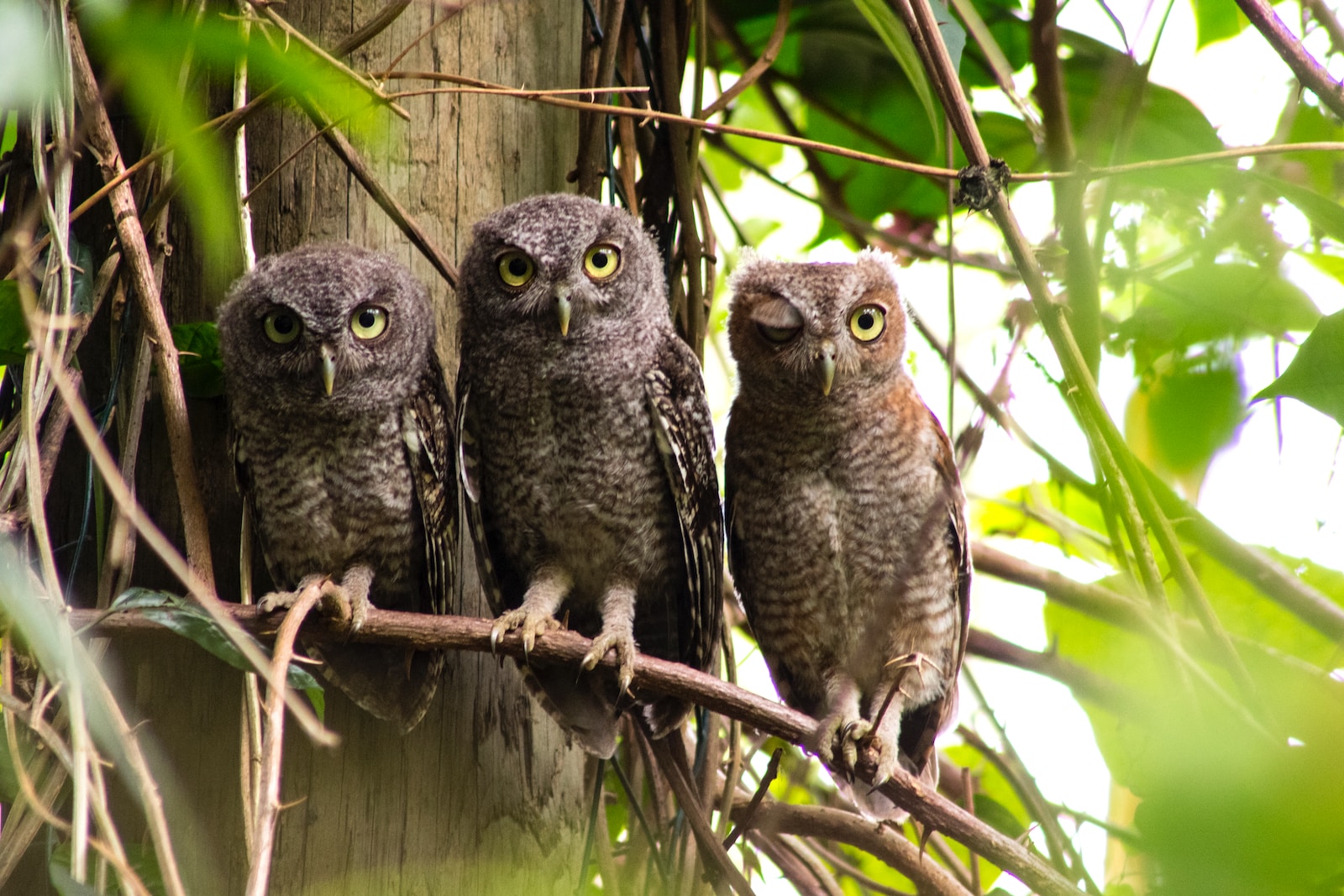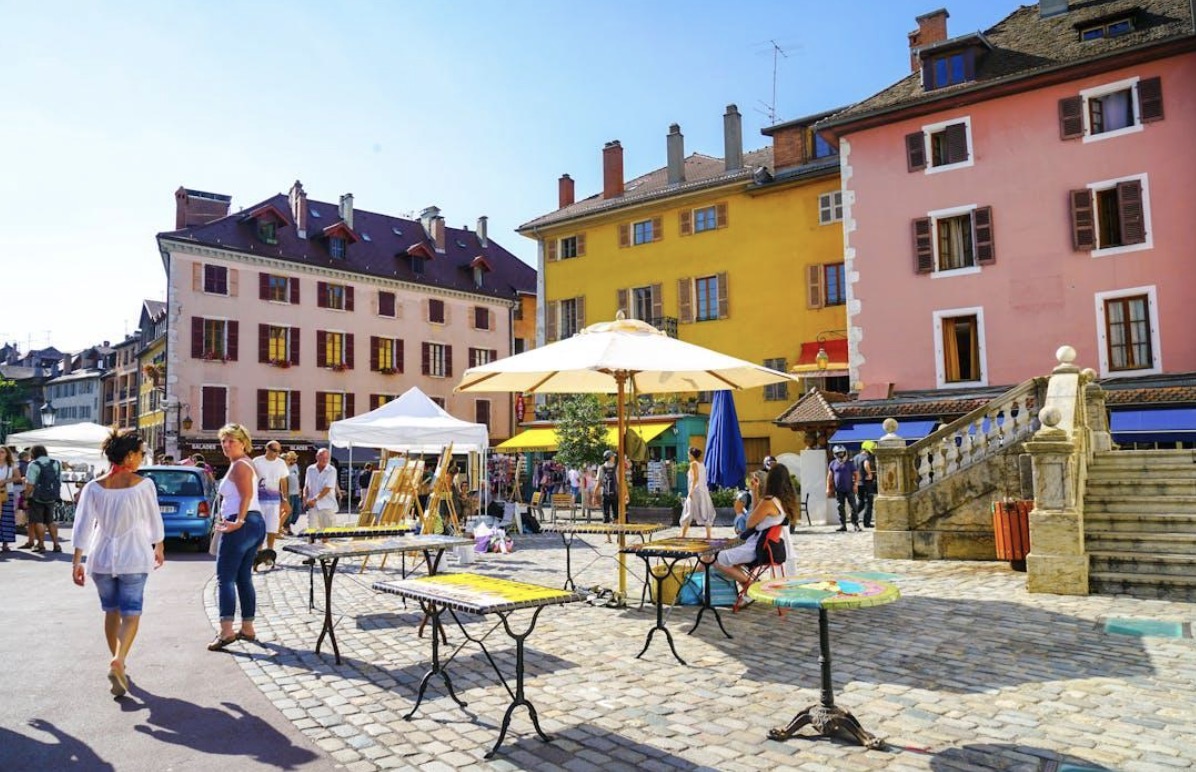Owls, with their distinctive hoots and nocturnal habits, have always fascinated us. These enigmatic creatures are known for their solitary nature, but interestingly, they do sometimes gather in small groups. When they do, such an assembly carries a unique collective term that is not only intriguing but also steeply rooted in history and culture. So, what is a group of owls called? Let’s dive in and find out!
A Parliament of Owls: The Popular Collective Noun
An assemblage of owls is most commonly referred to as a parliament. The term ‘parliament’ is thought to have stemmed from the Latin word ‘parlamentum,’ meaning ‘discussion.’ This term appears fitting, given the communicative behavior of owls when assembled, which often mirrors a discussion or debate.
In a parliament of owls, these raptors communicate through a variety of vocalizations, including hoots, screeches, and barks. These calls serve multiple purposes such as territorial defense, mate attraction, and coordination of hunting efforts.
The parliament can comprise any number of owls, from a small family to a large congregation of dozens of birds. These groups form for various reasons, including breeding, roosting, and foraging. And they can be male owls or female owls forming small groups or large groups.
Why Parliament? The Origins and Historical Context
The term ‘parliament’ for a group of owls didn’t appear out of nowhere. It has its roots in the Middle Ages, when distinctive terms for animal groups, also known as ‘terms of venery,’ were published for nobility. The noble class used these terms as a part of their unique vernacular, adding an element of linguistic flair to their communications.
The collective name ‘parliament of owls’ gained widespread popularity in the 1950s, thanks to renowned author C.S. Lewis. He used the expression in his acclaimed novel series, The Chronicles of Narnia, where a group of owls convened at night to discuss crucial matters, mirroring a human assembly or parliament. Given the novel’s massive success, the term ‘parliament of owls’ became ingrained in popular culture and literature.
The association of owls with wisdom and knowledge also played a part in the term’s origins. In Ancient Greek mythology, owls were considered symbols of wisdom and were linked to Athena, the Goddess of Wisdom and Strategy. Thus, a parliament, a gathering that typically involves deliberation and decision-making, seemed an apt term for a group of these wise fascinating creatures.
Other Collective Nouns for Owls
While ‘parliament’ is the most commonly used group name, there are other owl group names. These include a congress, a stare, a hooting, or a silence. Each of these terms reflects an attribute or behavior of these nocturnal birds. For example:
- A congress of owls refers to the birds’ ability to gather and ‘confer,’ much like a legislative assembly.
- A stare of owls alludes to the creatures’ penetrating gaze and their ability to remain motionless for extended periods, as if staring intently at something.
- A hooting of owls points to the birds’ characteristic vocalizations, often described as hoots or hooting calls.
- A silence of owls pertains to their ability to fly silently, which gives them an advantage when sneaking up on their prey.
Apart from these, some less common but equally intriguing terms include a wisdom, a bazaar, or a sagaciousness of owls.
Species-Specific Collective Nouns
Collective nouns can also vary based on the different species of owls. For instance:
- A group of Barn Owls is referred to as a stable.
- A group of Snowy Owls is often called a blizzard.
These terms aren’t commonly used in our everyday vernacular and are more likely to be found in literature, poetry, or ornithology books.
A Parliament in Flight: A Silence of Owls
An interesting point to note is that a large group of owls in flight is referred to as a silence. This term stems from the owls’ unique ability to fly almost noiselessly. This silent flight, facilitated by their specially-shaped fringed wings that minimize friction and noise, gives them a significant advantage when sneaking up on their prey.
Baby Owls and Their Collective Noun
When it comes to baby owls, or owlets as they are called, a group is known as a brood. So, you wouldn’t say “brood of owls,” but rather “brood of owlets.”
The Social Structure of Owl Groups
Even within a parliament of owls, there exists a hierarchical structure. Dominant birds often exert control over their territory and hunting endeavors, ensuring all members of the group can find food and survive. It’s essential to note that while owls may roost and communicate together, they are primarily solitary hunters.
Owl Pairs: A Closer Look
Owls are often spotted in pairs, especially during the breeding season. This pair, usually comprising one male and one female, often remains together for life, exhibiting monogamous behavior. During their mate’s demise, they may take another one. They return to the same nesting spot each year, and their young ones leave the nest when they are six to eight weeks old.
Owl ‘Parliaments’: A Rarity in Nature
Despite the intriguing term, a parliament of owls is a rare sight in nature. Owls are predominantly solitary birds, and seeing them in groups is an unusual occurrence. They are territorial and tend to live and hunt alone or with their mate. However, certain owl species, such as the great horned owl, barn owl, and short-eared owl, have been observed to form small flocks, particularly during cold winter months for warmth and protection.
Conclusion
The term for a group of owls, a ‘parliament,’ is more than just an intriguing piece of trivia. It’s a reflection of the nocturnal bird’s perceived intelligence and the human tendency to find patterns and connections in nature. While the term ‘parliament’ is steeped in history and culture, it’s not commonly used in day-to-day conversations. Yet, it continues to captivate our imaginations as we delve deeper into the fascinating world of owls. Whether they’re hunting silently under the cover of darkness or convening in a rare ‘parliament,’ owls remain one of nature’s most enigmatic creatures.






